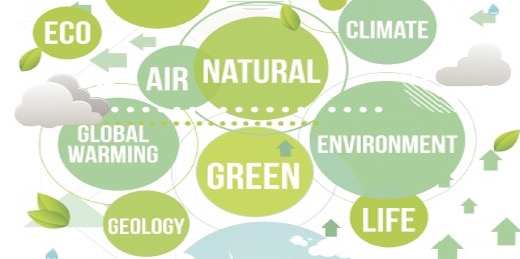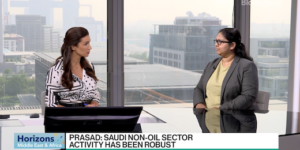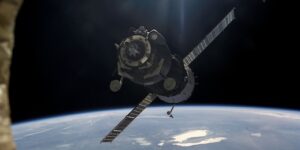The article titled “Making it clean: a rapidly changing global mix” was published in Aspenia Issue n. 76, May 2017, which can be accessed here.
The world is in for an energy revolution. Technological innovation and fear of climate change are sparking investment in clean energy solutions. A massive shift is taking place, away from fossil fuels to renewable sources, yet more still needs to be done to curb global warming.
Over the next few decades, the world will witness an energy transformation and revolution. New energy investment will be largely directed at renewables (solar, wind, hydro, and geothermal), where between 2017 and 2040 some 7.8 trillion dollars are forecast to be invested, compared to just 3.2 trillion in fossil fuels and nuclear. This will represent a massive shift, as nearly 60% of the world’s power will be created through zero-emission methods. Nevertheless, if there is to be any hope to keep global warming below a 3°C trajectory, another 5.3 trillion dollars will still need to be invested in energy efficiency, to help cut carbon emissions and transfer power sources over to renewable systems.[1]
Two driving forces – technological innovation and the fear of climate change – are leading the shift to renewables. Since 2009, the cost[2] of wind power has declined by 66%, while the cost of utility-scale solar power has declined by 85%, with a further 36% reduction expected by 2020. Along with even greater falls in the cost of energy storage, renewable energy is increasingly cost-competitive with conventional generation technologies. Onshore wind and solar will be the cheapest ways of producing electricity during the 2020s and, in most of the world, in the 2030s too. Other global disruptive technologies are also encouraging a move to renewable energy, including oil to gas switching. Electric vehicles will represent 35% of new light-duty vehicle sales by 2040, some 90 times the 2015 figure. The fourth industrial revolution – including robotics, nanotech, 3D and 4D printing – will radically reduce the energy-to-GDP ratio, increasing energy efficiency across all human activities and energy uses.
The second factor favouring renewables is the ongoing Anthropocene age and the deadly threat of climate change to our only habitat. We face the potential extinction of humans and other animals. The COP21 and COP22 summits underscored the shared global consensus on the environmental, political, social and economic dangers posed by global warming. However, these government policy commitments and strategies require international, regional and national cooperation between governments, business, civil society, non-profit and non-governmental organizations, and households. While Donald Trump’s stance on climate change and his eviscerating “vision” for the American Environmental Protection Agency is likely to make the path towards clean energy more difficult, it also offers emerging giants like China and India the opportunity to take the lead in showcasing their commitments towards clean energy and decarbonization. The launch, last year, of a one billion dollar clean energy investment fund – Breakthrough Energy Ventures, by Bill Gates, Jack Ma, Ambani and others as investors – promises the implementation of innovative alternative energy technologies through support of research and development.
THE MENA REGION’S TRANSFORMATION. The Middle East and North Africa (MENA) region is highly vulnerable to the risks of climate change due to water scarcity, growing desertification, concentration of economic activities in coastal areas and a reliance on climate- sensitive agriculture. The region is also facing a demographic challenge. Currently home to close to 390 million people, the MENA population is expected to rise to approximately 500 million by 2100. The young (60% under thirty) and fast-growing population, rapid urbanization (about 3% per annum), and economic growth are all putting pressure on existing infrastructure and leading to rapidly growing domestic energy demand. Besides being rich in natural resources,[3] the MENA region is also “renewable energy rich”, with some of the highest solar irradiation on earth. More solar power falls on the world’s deserts in six hours than is consumed in energy everywhere in a year. The region has a natural comparative advantage here.
Planned MENA investments in the energy sector are an estimated 622 billion dollars over the next five years. Given current pricing policies, MENA power capacity alone will need to expand at an average annual pace of 8% between 2016 and 2020. This corresponds to an additional capacity of 147GW and accounts for the largest share of investments (207 billion), while projects under study represent by far the largest portion of planned investments (282 billion).
The Gulf Cooperation Council (GCC) will require 85 billion dollars to add 69GW of generating capacity by 2020. The GCC has already committed 174 billion in investments, more than 50% of the MENA total. By increasing the share of renewables in power production, oil producers can free crude oil and natural gas for export markets. Increasing the use of renewable energy would also help reduce the GCC countries’ large carbon footprint: per capita emissions and ambient air pollution there are among the highest globally.
The United Arab Emirates (UAE), for example, holds around 6% of global crude reserves, and plans to spend 164 billion dollars on renewable energy by the middle of the century. Dubai has launched a solar PV project at 2.91c/kwh and announced the completion of a 200MW power plant (that will produce enough electricity for 50,000 homes) one month ahead of schedule, as part of a plan to build the world’s largest solar energy park by 2030.
SUPPLYING THE PEOPLE. MENA countries aim to rapidly adopt renewable energy (wind and solar) over the coming decades.[4] The cases of the lower-income, densely-populated countries of Egypt and Morocco are particularly notable.
The growth of distributed renewable energy has implications for economic development and access to energy. An estimated 21.3 million people in the MENA region still lack electricity, and close to 8 million people rely on traditional biomass for all of their energy needs. The rise of distributed, off-national grid, renewable power means remote and rural areas can have access to energy.
The introduction and diffusion of renewable energy systems would increase productivity, stimulate economic development and improve quality of life by modernizing rural electrification and networks. It would also free women from the back-breaking, time-consuming job of getting water and fuel for the household. Local renewable energy systems free up time for education and skill acquisition as well as enabling access to the internet and the digital economy. They improve access to services, including health and financial services. In addition, the operation, management, and maintenance of renewable installations can create sustainable, local jobs. The bottom line is that renewable energy can be a major contributor to economic development and poverty reduction.
THE FOUR PILLARS OF DECARBONIZATION. According to IRENA, the GCC region can cut its annual water use by 16%, save 400 million barrels of oil, create close to 210,000 jobs and reduce its per capita carbon footprint by 8% in 2030 – all by achieving the renewable energy targets that national and sub-national governments have already announced. The decarbonization strategies and objectives require deep partnership with the private sector, and should be built on four pillars.
Pillar one concerns removing fossil fuel, water, electricity and related subsidies,[5] so that the pricing of such resources and services reflects true economic costs and accounts for externalities. This would remove a major burden from government budgets, improve energy efficiency in all sectors and generate substantial environmental and health benefits.
Pillar two of decarbonization strategies regards the legal and regulatory frameworks to support the implementation of measures to alleviate the consequences of climate change. Institutional frameworks are important because they imply broad political commitment and support policies and investments. None of the GCC countries have yet drafted climate change framework legislation to serve as a comprehensive, unifying basis for climate change policy.[6] However, the UAE recently established Climate Change and Environment Ministries, which is a significant pioneering step in the right direction.
Pillar three is the imposition of carbon taxes based on emissions generated from burning fuels, rather than emissions trading schemes, which have failed to achieve their stated objectives. Businesses and households respond to price as well as non-price incentives and “nudges”. Introducing carbon taxes would shift the energy mix towards renewables, reduce fuel consumption, increase fuel efficiency and sharply reduce the carbon emissions that are driving global warming. For the GCC countries, which are energy wasteful, the institution of a carbon tax would also generate substantial revenues for governments, increase energy efficiency and drive decarbonization strategies. Carbon taxes could raise multiple times the revenue projected from the proposed introduction of VAT and other tax proposals in 2018.
The fourth pillar is decarbonization finance. COP21 and COP22 commitments can unleash more than 16 trillion dollars of investments in renewable energies and clean technologies. Governments need to set up climate funds – which can be self-financing, thanks to the proceeds of carbon taxes – for investment in renewables and clean technology infrastructure; they also need to facilitate the financing of renewables r&d and investment through financial markets. For businesses and entrepreneurs, the green and clean economy presents an unprecedented opportunity for innovation and productivity growth enhancing investments, all while reducing energy costs. The important policy lesson is that there is no trade-off between the objectives of economic growth and decarbonized economies.
OPPORTUNITIES FOR AND LINKS WITH EUROPE. The MENA region’s renewable energy transformation presents a unique opportunity for business partnerships with Europe, apart from official cooperation. In Morocco, for example, a partnership between the government and the private sector is building what will be the largest solar plant in the world. Located in the desert outside Ouarzazate, the 3.9 billion dollar plant will produce enough electricity to power more than a million homes when it is completed in 2018. In Jordan, private firms have already built twelve solar plants and are in the process of building at least seven more, the largest collection of privately-owned power plants in the region. In 2016, a number of large-scale PV projects commenced in Saudi Arabia, Kuwait, Jordan and the UAE, all of which are open to private sector participation. The region currently has 885MW of solar power capacity in operation, 3,610MW under construction and 1,300MW under tender. Key announcements last year included Saudi Arabia’s 30-50 billion dollar Renewable Energy Program, that started tendering 700MW of solar and wind energy projects in February.
Growing energy demand and the renewable energy transformation potential of North Africa and the GCC represent a major business opportunity for European energy companies. The scope for partnership can and should encompass renewable energy joint ventures and public-private partnerships, joint research and development projects in solar technologies and investment in a North Africa-Europe energy corridor linking Morocco, Algeria and eventually Libya and Tunisia to Europe through Spain, France and Italy.
The electricity grid of Europe should be linked to North Africa and an integrated electricity market developed. This strategic vision is a feasible project and would diversify Europe’s sources, thereby reducing its dependence on Russian gas. The International Energy Agency has estimated that the potential from concentrated solar power technology alone could amount to 100 times the electricity demand of North Africa, the Middle East and Europe combined.[7]
The renewable energy transformation of the MENA region presents a historical window of opportunity based on technological change and comparative advantage, requiring bilateral and multilateral agreements between the EU and the North African countries. Unlike previous efforts at economic integration (including the Barcelona Process), energy supply integration has a solid economic and financial case based on the power of technological change and comparative advantage. The clean energy revolution can transform the economies of many struggling regions and can save us all from the dire consequences of climate change.
Endnotes
[1] “2017 Market Outlook,” Bloomberg New Energy Finance.
[2] Refers to unsubsidized, levelized cost of energy. See Lazard’s Levelised Cost of Energy, version 10, 2016.
[3] MENA contains 47.7% of the world’s proven oil reserves, 42.7% of natural gas and other minerals.
[4] Selected MENA renewable energy targets: Saudi Arabia plans to install 3.5GW of renewables by 2020 (as part of Vision 2030); the UAE plans to derive 24% of its power from clean sources by 2021 and plans to increase its target for power generation from clean energy to 30% by 2030; Jordan’s national strategy aims at raising the share of renewables in the energy mix to 10% by 2020, equivalent to a generating capacity of some 1500MW; Morocco has a renewable energy target of 52% by 2030; Egypt intends to supply 20% of generated electricity from renewable sources by 2022.
[5] The average estimated implicit cost of low energy prices for the GCC, based on 2016 prices, ranges from 0.8% of GDP for the UAE to over 7% for Kuwait. See the IMF Regional Economic Outlook from October 2016.
[6] See the LSE Global Climate Legislation Study, Grantham Institute, 2015.
[7] See the renewable energy blog at www.worldbank.org.






